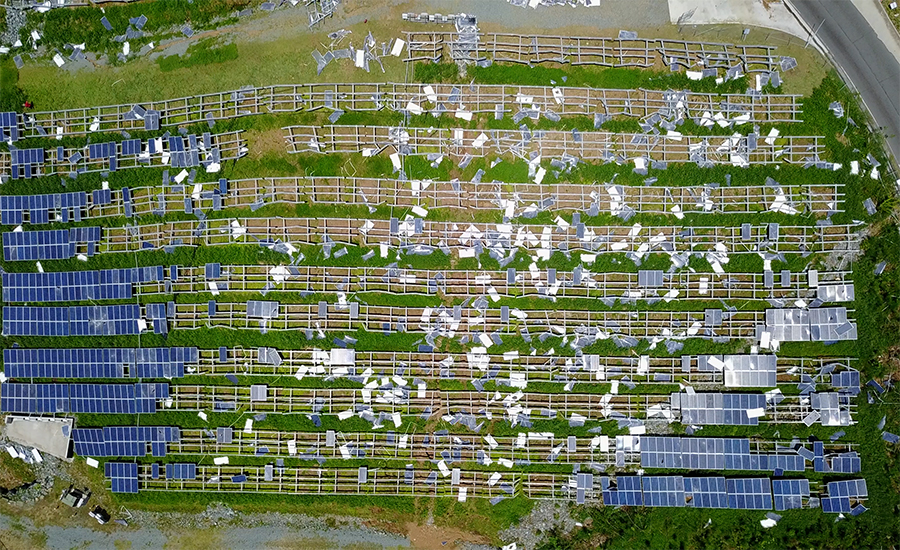Power has been restored to about 5% of customers in Puerto Rico after nearly all of the island’s 1.57 million customers were left in the dark on Sept. 20, when Hurricane Maria left the power grid in shambles.
The U.S. Army Corps of Engineers sent a contingent, including its commander, LTG Todd Semonite, to Puerto Rico over the weekend to assess the damage and speak directly with government officials and technical experts. “After this visit, we will be better prepared to answer questions regarding the way ahead,” Maj. Catalina Carrasco told ENR.
About 80% of the island’s transmission and distribution system was down after the storm, says Puerto Rico Electric Power Authority CEO Richardo Ramos. “It’s overwhelming and why we have requested aid,” he says. The utility has sought help from contractors and sister utilities on the U.S. mainland. A coalition of utilities has begun sending linemen and experts to the island to assist.
PREPA has contracted with Montana-based WhiteFish Energy Holdings to provide a team of lineworkers to help with initial transmission and distribution restoration. The New York Power Authority has technicians in Puerto Rico who have embedded into the emergency response team overseen by PREPA.
The team includes 20 construction logistics and energy experts in power transmission, generation, substations, utility logistics, project management, and power system energization. Two drone pilots and drones from the New York Department of Environmental Conservation are helping with assessments and repairs.
The New York team is coordinating directly with ACE and PREPA to help restore the damaged grid. The contingent will help coordinate the mutual assistance from the American Public Power Association and the Electricity Subsector Coordinating Council.
Southern Co. CEO Tom Fanning is co-chair of the coordinating council., which is leveraging mutual assistance networks to have line crews, support personnel and equipment ready when Puerto Rico is able to receive them.
According to the U.S. Dept. of Energy, power has been restored to San Juan’s business district and 14 hospitals. The city’s airport and marine terminals now are reconnected to the grid, as well.
PREPA’s Ramos hopes to have power restored to 50% of the island in two to three months. While it took six months to restore power after Hurricane Hugo, he says, “I hope to beat that.” But Ramos notes that the agency had 4,000 more employees and the infrastructure was in better condition in 1989, when Hugo hit the island.
Downed power lines litter most streets in St. Thomas, U.S. Virgin Islands, where, along with St. John and St. Croix, there is no power. Line workers from the Western Area Power Administration are working to patch the seven-mile-long, 345-kW transmission feeder from the island’s power plant to a substation that delivers power to St. John via submarine cable. “We’re about two miles into the restoration,” says Will Schnyer, the WAPA safety manager whose 25-member team got in on Sept. 30. “I think we can get to that submarine cable in two to three weeks.”
The Corps also is at work on the islands. “We’re problem-solvers,” says Maj. Drew Freinberg. In addition to power restoration, the Corps is doing design work for future microgrids, he says.






Post a comment to this article
Report Abusive Comment